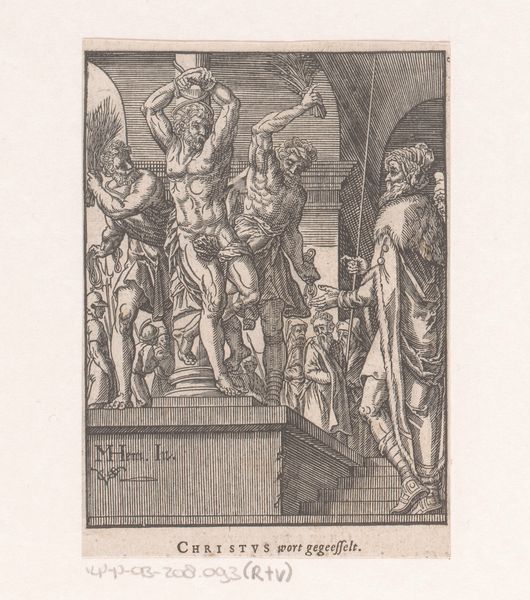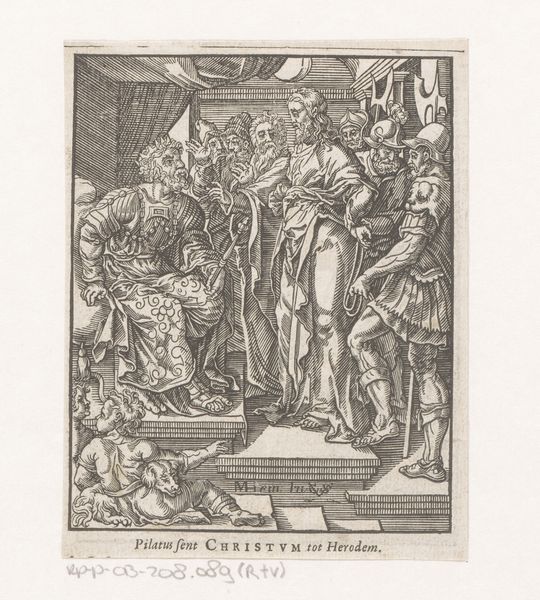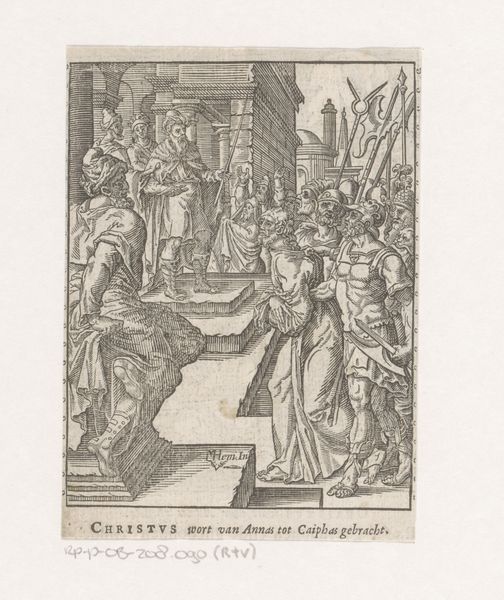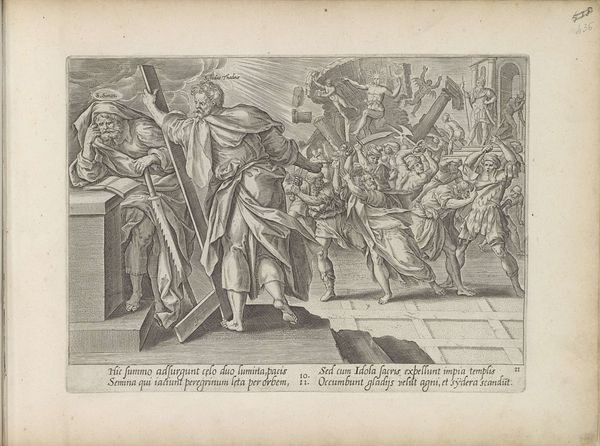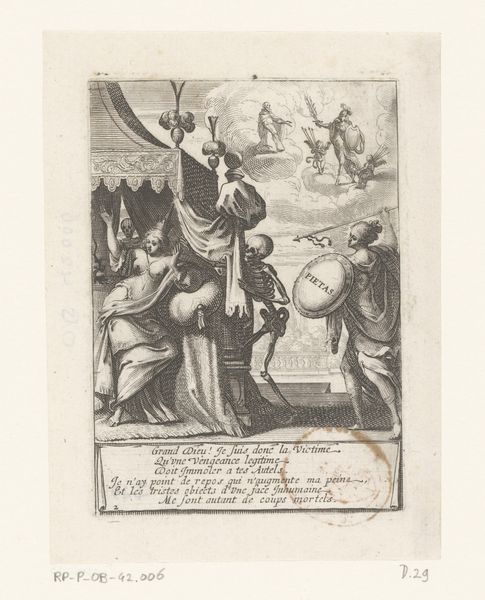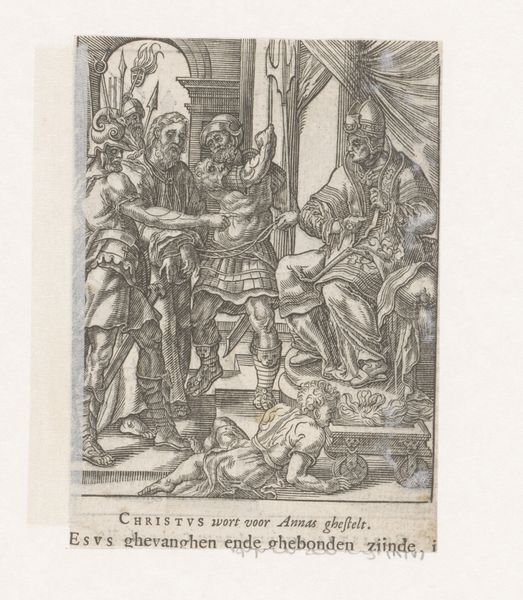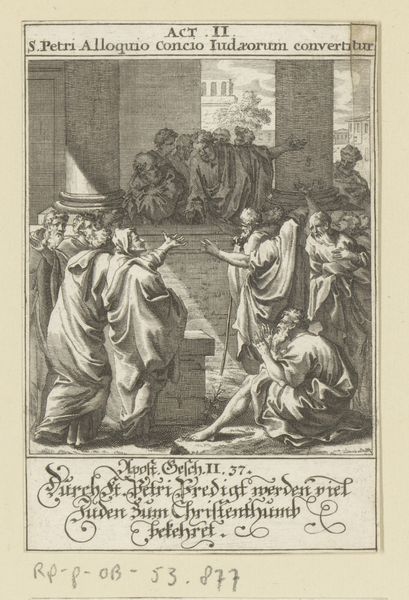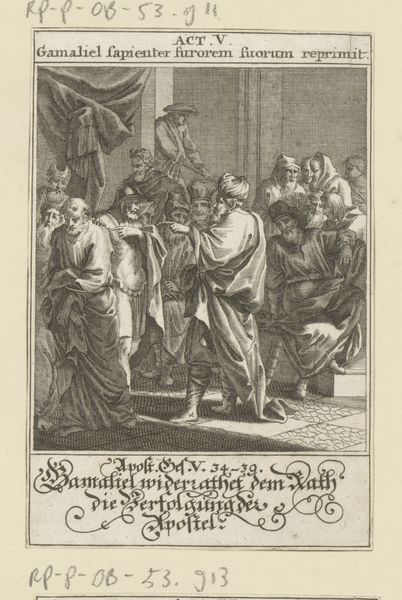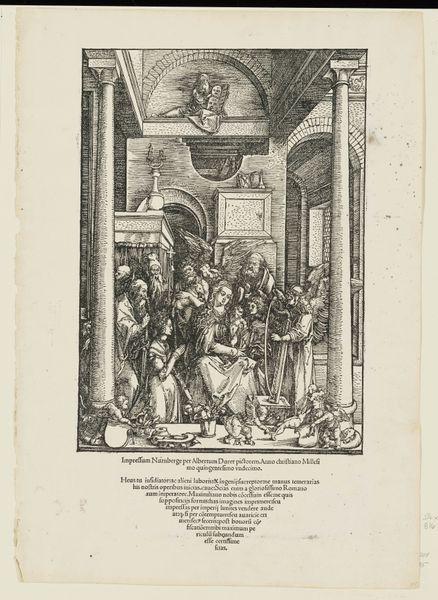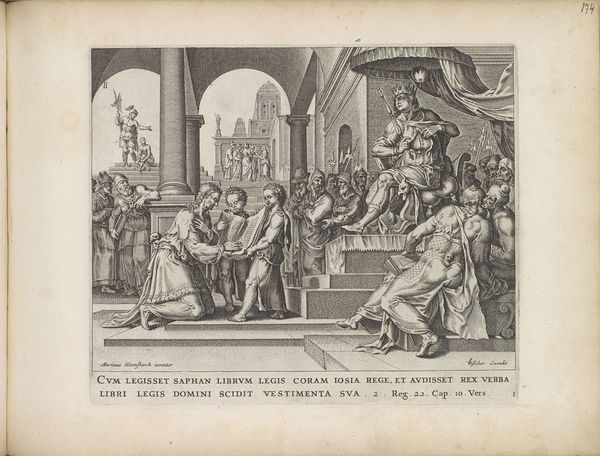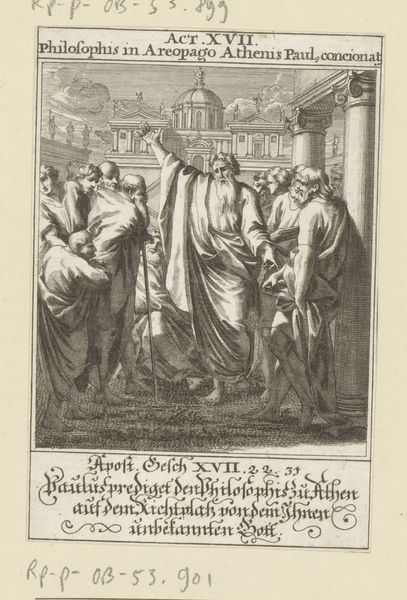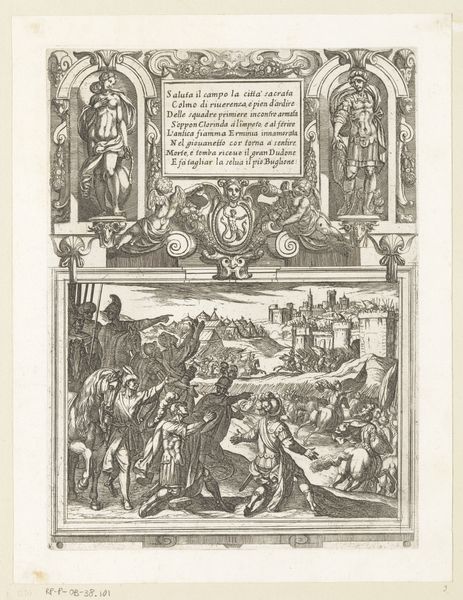
print, engraving
#
narrative-art
#
baroque
# print
#
figuration
#
history-painting
#
engraving
Dimensions: height 122 mm, width 97 mm
Copyright: Rijks Museum: Open Domain
Christoffel van Sichem II made this woodcut print, “Pilate Washes His Hands in Innocence,” sometime in the early 17th century. It depicts the biblical scene where Pontius Pilate, the Roman governor, symbolically washes his hands to disclaim responsibility for the condemnation of Jesus Christ. The image operates through visual codes familiar to its time. The print emphasizes Pilate's attempt to distance himself from the injustice, highlighting a tension between worldly authority and moral responsibility. Made in the Netherlands, a region undergoing religious and political upheaval, the print reflects the cultural anxieties surrounding justice and power. The institutions of both church and state are implicated in this scene of moral failure. Was Sichem critiquing the established religious and political structures of his time? Understanding this artwork requires looking into the religious and political history of the 17th-century Netherlands. Researching the social role of religious imagery in the Dutch Republic might reveal the print’s critical commentary. Art becomes meaningful when we consider its social and institutional context.
Comments
No comments
Be the first to comment and join the conversation on the ultimate creative platform.
